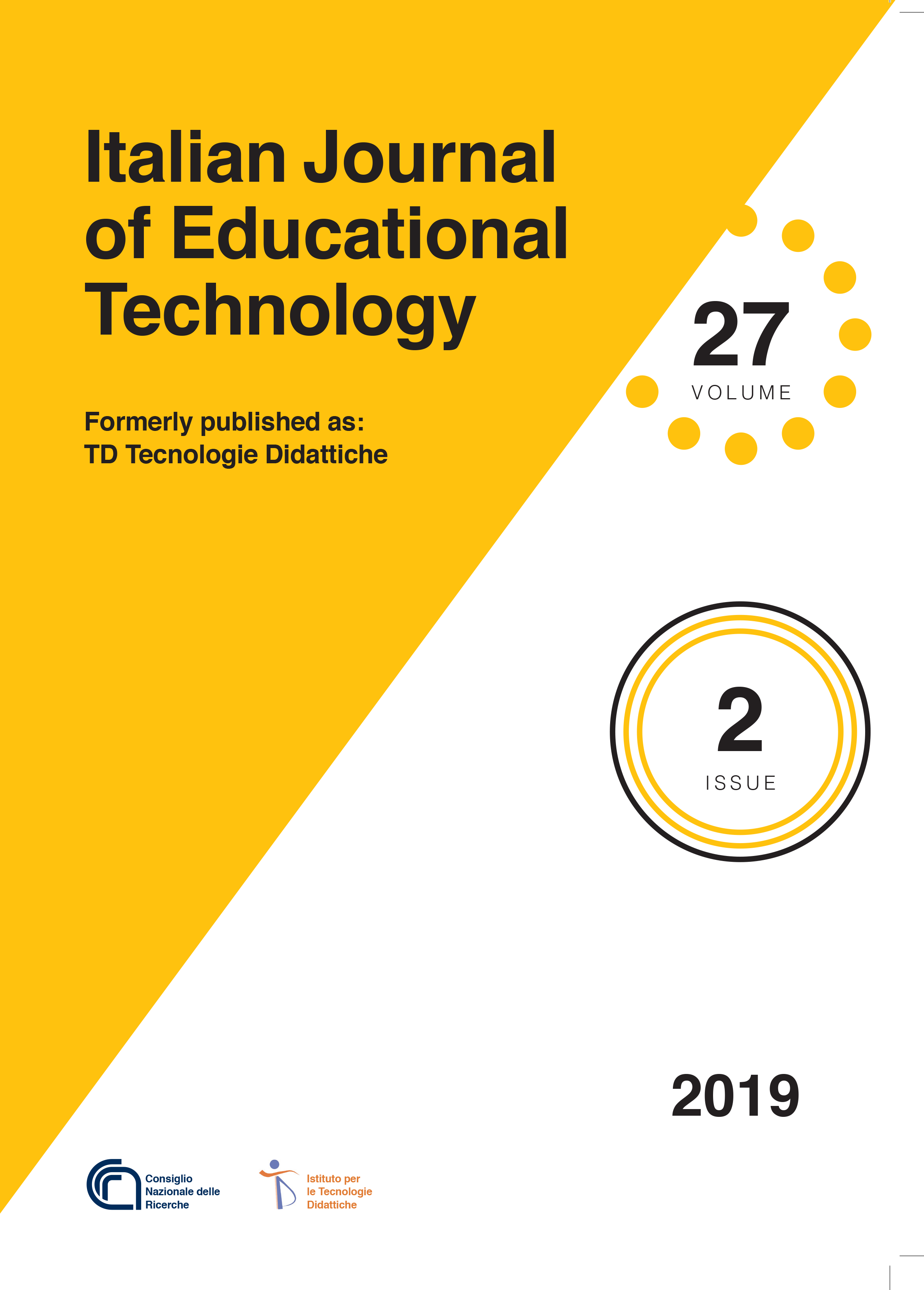EDITORIAL. DIGITAL GAMES AND LEARNING
Main Article Content
Abstract
This special issue aims to increase the body of knowledge and evidence concerning the learning potential of video games and gamification, as well as the problems associated with educational uses of games (Persico, Passarelli, Dagnino, Manganello, Earp, & Pozzi, 2019). The selection of papers presented here has been informed by this overarching aim. At the same time, we hope that educators planning to employ games in their classes will find that they provide inspiring examples of educational uses of games. Since designing appropriate and pedagogically sound game-based learning interventions is a difficult endeavour, we do hope that the following articles will contribute to dissipate the fog that often envelops design principles for Game-Based Learning.
Article Details
Section
Authors who publish with this journal agree to the following terms:
- Authors retain copyright and grant the journal right of first publication with the work simultaneously licensed under a Creative Commons CC BY 4.0 Attribution 4.0 International License.
- Authors are able to enter into separate, additional contractual arrangements for the non-exclusive distribution of the journal's published version of the work (e.g., post it to an institutional repository or publish it in a book), with an acknowledgement of its initial publication in this journal.
- Authors are permitted and encouraged to post their work online (e.g., in institutional repositories or on their website) prior to and during the submission process, as it can lead to productive exchanges, as well as earlier and greater citation of published work (See The Effect of Open Access)
References
Deterding, S., Sicart, M., Nacke, L., O'Hara, K., & Dixon, D. (2011). Gamification. using game-design elements in non-gaming contexts. In CHI'11 Extended Abstracts on Human Factors in Computing Systems (pp. 2425-2428). New York, NY, USA: ACM.
Earp, J., Dagnino, F. M., & Caponetto, I. (2016). An Italian pilot experience in game making for learning. In R. Huang, Kinshuk, & J.K. Price (Eds.), ICT in education in global context. Lecture Notes in Educational Technology (pp. 171-199). Singapore: Springer. doi: 10.1007/978-981-10-0373-8_9
Gee, J. P. (2003). What video games have to teach us about learning and literacy. Computers in Entertainment, 1(1), 1-4.
Malone, T. W. (1980). What makes things fun to learn? Heuristics for designing instructional computer games. In Proceedings of the 3rd ACM SIGSMALL Symposium and the First SIGPC Symposium on Small Systems - SIGSMALL ’80 (pp. 162–169). doi: 10.1145/800088.802839
Persico, D., Passarelli, M., Pozzi, F., Earp, J., Dagnino, F. M., & Manganello, F. (2019). Meeting players where they are: Digital games and learning ecologies. British Journal of Educational Technology, 50(4), 1687-1712.
Persico, D., Passarelli, M., Dagnino, F. M., Manganello, F., Earp J., & Pozzi, F. (2019). Games and learning: Potential and limitations from the players’ point of view. In M. Gentile, M. Allegra, H. Söbke (Eds.), Lecture Notes in Computer Science, Vol. 11385, Games and Learning Alliance. 7° International GALA Conference (pp.134-145). doi: 10.1007/978-3-030-11548-7_13
Prensky, M. (2006). Don't bother me, Mom, I'm learning! How computer and video games are preparing your kids for 21st century success and how. St. Paul, MN, USA: Paragon House.
Ratan, R., & Ritterfeld, U. (2009). Classifying serious games. In U. Ritterfeld, M. Cody, & P. Vorderer (Eds.), Serious Games: Mechanisms and Effects (pp. 10–24). doi: 10.4324/9780203891650

